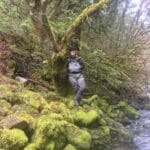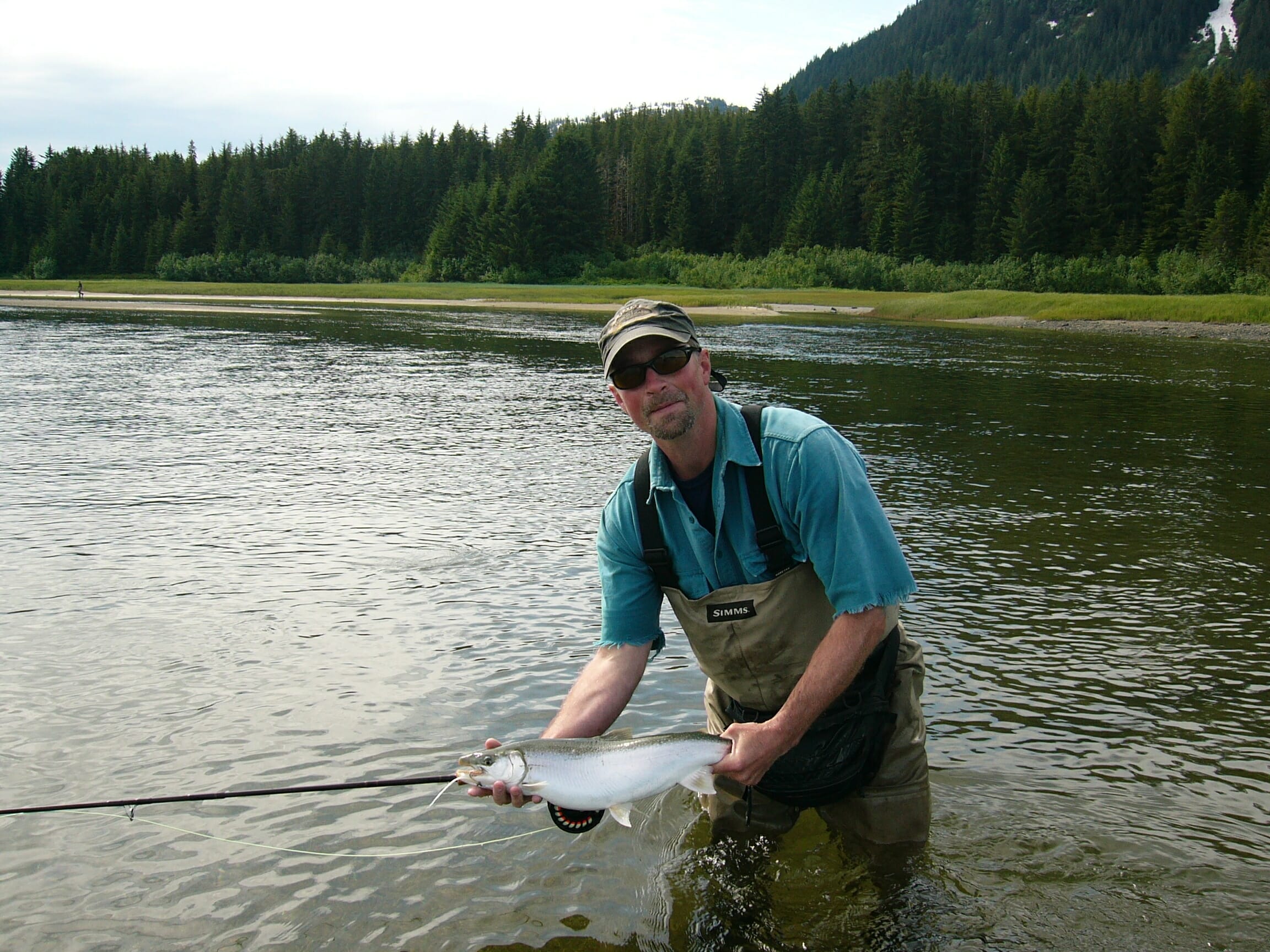By Mark Kaelke
Over the last 13-years as a Trout Unlimited staffer in Alaska I’ve learned successful conservation efforts are most often realized as a result of persistence and coalition-building, and that sometimes, “winning” means just keeping what we already have.
As I wrap up my time as a TU employee, I’ve been asked to provide a retrospective of my work and hopefully pass along some insights into what it’s been like and why we do what we do. I’m not sure I deserve this soapbox but just like throwing a cast from atop a big log or rock helps one extend their throw, I’m hoping this last assignment will catapult my writing into something of value.
TU had not had offices or staff in Alaska for the five years previous to me coming onboard as a contractor in 2006. I had just sold my guiding and charter businesses and had been a TU member for some 20 years when my fishing buddy and newly- hired-director, Tim Bristol, approached me about a job. I had little in the way of clear ideas about what it meant to do conservation work, but Tim did, and he was apparently desperate enough for help to give me a shot.
As is still the case today, most of the focus, political power and money connected to fish in Alaska resides with commercial fisheries. Go to just about any coastal Alaska community and you’ll find modest to dilapidated houses and barely drivable cars alongside modern harbors full of shiny, well-maintained fishing vessels. It is abundantly clear where Alaskans’ priorities lie.
So, with a newly reborn TU program in need of an identity, Tim and I set out to bring commercial fishermen into the fish conservation fold. Almost every meeting introduction included what became our standard TU-AK disclaimer, “We’re not about allocation of fish between user groups, we just want to make more fish for all of you to fight over.” There was still lots of suspicion as to what we were really up to, but the disclaimer got our foot in the door and got a few chuckles as well.
Although we did our best to get the TU name out there, the looming threat of the proposed Pebble mine consuming the ultra-productive fisheries of Bristol Bay and several pushes to re-animate the industrial clear-cut logging industry on the Tongass did far more to elevate the conservation mindset of Alaska’s fishermen than anything we could have ever done as fish advocates.
And in hindsight, what happened in Alaska was amazing. Coalitions of commercial, sport and subsistence fishermen who had once been bitter opponents, materialized to defend fish and their habitat. Movies about Alaska fishing and threats to it, produced by young, edgy filmmakers started cropping up and they were actually good! Statewide polls on fishing and studies on the economic contribution of fisheries became big news in local papers. As someone who’d been in Alaska since the early 80s, I saw the state go from a place that loved their fish, to a place that loved their fish and had come to realize it was up to them to make sure fish were around in the future. It was inspiring and fun to be involved with, and I got up every morning excited for the opportunity to be additive.
The Alaska program grew and Nelli Williams came on board as state director. Organizing supporters became more nuanced as threats continued, and political dealings became more complex as TU’s voice and sway became more apparent. But we were winning. For a while we thought Pebble was dead. We got some great watersheds better protected through our Tongass 77 proposal. Our strategy of building support through monetizing fish values and working closely with both public stakeholders and agency managers was paying dividends. We began looking at congressional designations that would add permanence to these gains.
Then, President Trump and Gov. Dunleavy came into office and the tone changed. The Alaska program became all about holding the ground we’d already gained. So far, we’ve largely been successful. However, I can’t help but think of where we’d be now had we not spent the last three years playing defense.
Over my time with TU, I’ve learned we both lose and gain wild places and fisheries in small increments. We (mostly) win our issues when we are committed to the long slog. I’ve learned the best advocates are those that love and are connected to the places they fish but those qualities are all for naught unless they’re a part of something larger that binds individual voices to those of others with the same motivations. TU really is that big, industrial sized bottle of head cement that focuses us all together.
My departure from TU as a staff member is on entirely good terms. A very enticing job offer for my wife and the opportunity to be closer to family have landed me in north-central Minnesota. I’ve traded glaciers, mountains and some of the wildest places left on the planet for cornfields, lakes and prairies. I’m getting myself outfitted to cut holes in ice and fish through them and I’ve been able to indulge my passion for pheasant hunting. It is definitely not Alaska.
So far, I have yet to be in a place here where I can’t see, smell or hear civilization, but the other day I was on small piece of public land, my wirehairs in tow, searching a section of short-grass prairie for a late-season rooster when I came across a sign noting the small creek that ran through it had been restored by TU. Even better still, the sign indicated that brook trout resided in the creek. So, I’ll pull crappies up through the ice instead of halibut over the rail of my boat and when spring comes, instead of an 8 weight and steelhead fishing, I’ll take my 4-weight out and search for brookies on the prairie.
Working for TU has been a great ride and I want to give an Alaska-sized thank you to all of my TU colleagues in Alaska and the same to Chris Wood and Rob Masonis. You have all made TU an incredible organization and one I am honored to be a part of.
In my new capacity as a non-staff, member of TU, I’ll be an advocate for that newly-discovered, prairie brook trout stream just as I’ll continue to advocate for all those coastal flows, surrounded by ancient trees and towering mountains in Alaska. And I know TU will be there for the long-haul to be that head cement, backed by dedicated staff and supporters who see the need to protect the places we love to fish.



